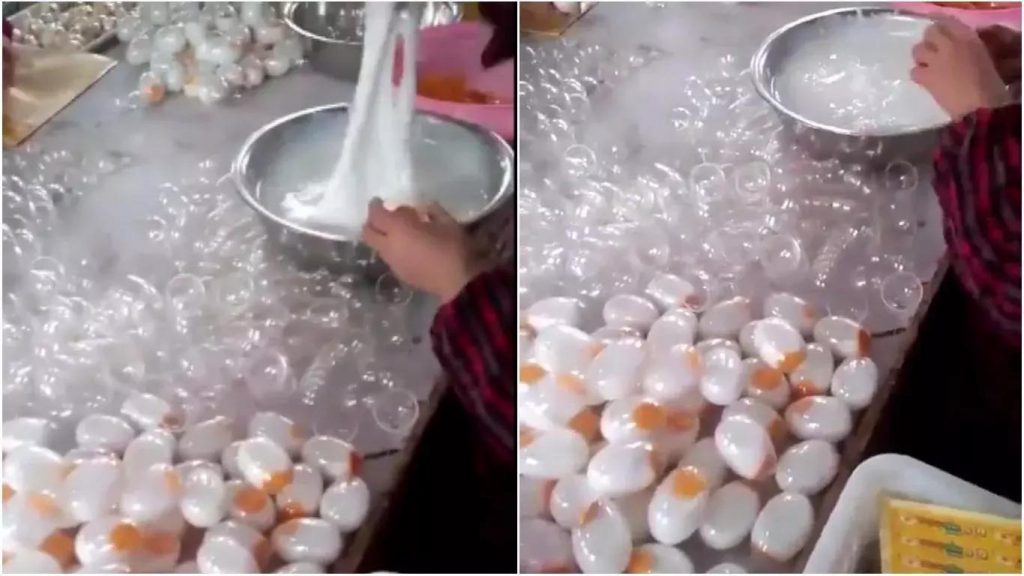
Report has it that fake eggs are being produced and people are it from the market and eating it without knowing.
In March, a woman in India identified as Anita Kumar, filed a police complaint after she found that the eggs she bought spread out like plastic on pan. She tried burning the egg shells and found they were inflammable.
In March, a woman in India identified as Anita Kumar, filed a police complaint after she found that the eggs she bought spread out like plastic on pan. She tried burning the egg shells and found they were inflammable.
Artificial eggs have little or no nutritional value compared with the real egg.
The shells are made of ‘plastic-like materials’, while the egg yolk and egg white are made of sodium alginate, alum, gelatin, calcium chloride (NaCl), water and food color.
According to experts, making fake eggs using chemicals is not a big deal. The fear is that dangerous chemicals such as Benzoic Acid and Mercury may be used to make the yolk. These chemicals can affect the liver and even cause cancer.
While it may be a bit difficult to differentiate between fake and real eggs, these seven can help:
1. The shell of fake eggs are shinier than real ones. Though this is not easily noticeable.
2. When you feel the outer shell of fake eggs, it is a little bit rougher than the real egg.
3. Shake the egg before breaking it. If you hear some noises inside the shell (water overflowing), then it is a fake one.
4. Tap the egg lightly. The sound will be crisper if the egg is real.
5. If the egg is fake, the egg yolk and egg white will mix together as soon as you break it and pour on a pan. This is because they are both made of the same raw materials/chemicals.
6. The real egg has a different smell from the fake ones.
7. Put the shell on fire. If the egg is fake, the shell will catch fire or start melting like plastic.







